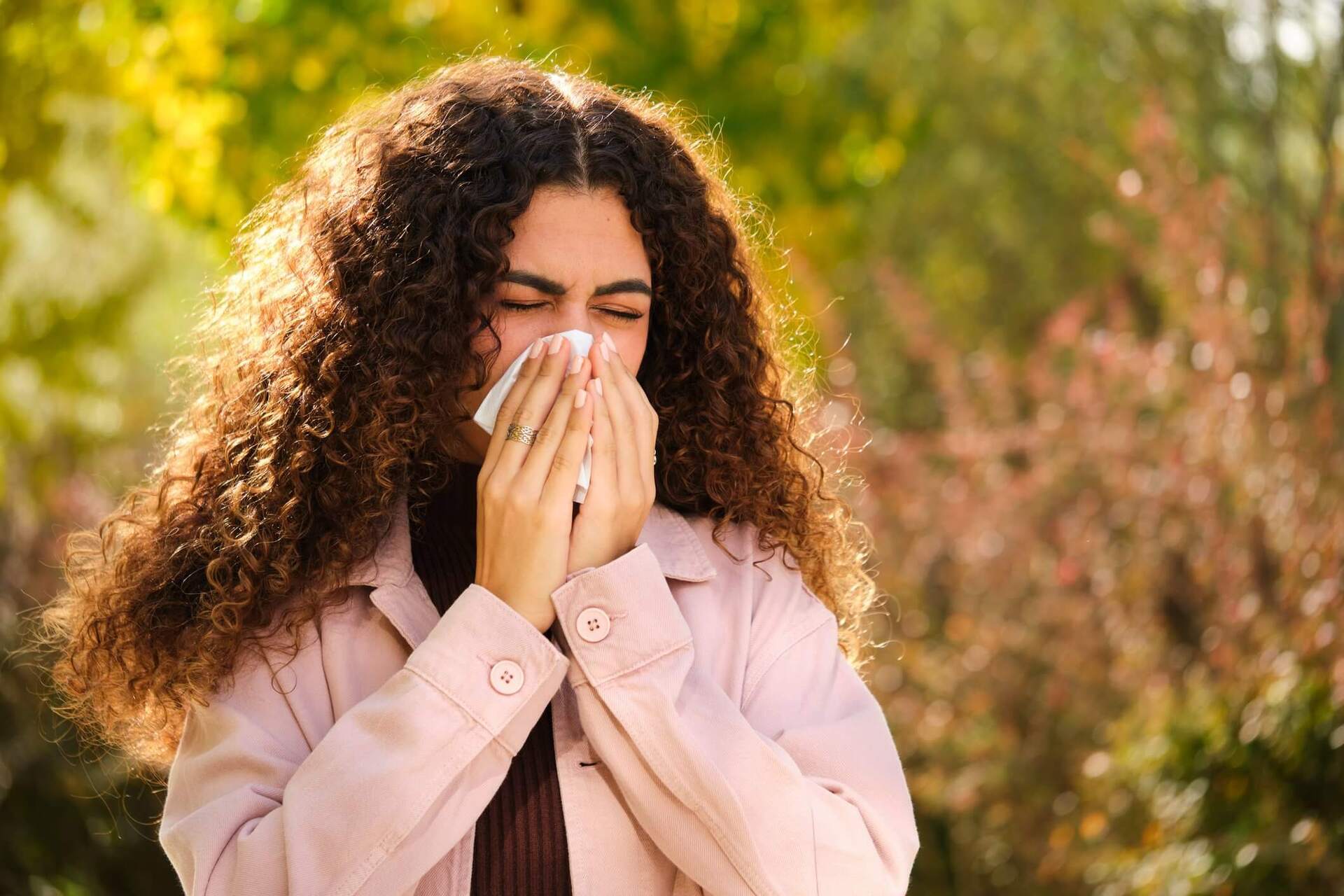- Thriving Guide
- Posts
- How Weather Can Trigger Allergies Without You Realizing It
How Weather Can Trigger Allergies Without You Realizing It
From windy days to thunderstorms, here’s how the forecast could be behind your sneezing, itching, or wheezing.

If you’ve ever felt stuffy after a spring rainstorm or noticed itchy eyes on a breezy afternoon, it’s not just in your head. Weather can play a major role in triggering allergies even if you’re doing everything else right to avoid common allergens like pollen, mold, or dust.
Understanding how weather influences allergic reactions can help you better manage symptoms and reduce flare-ups year-round.
How Weather Affects Allergies
Allergic reactions happen when your immune system mistakenly identifies a harmless substance like pollen or mold as a threat. Your body then launches an inflammatory response, leading to symptoms like sneezing, congestion, or itchy skin.
What makes allergies tricky is that different weather conditions can worsen symptoms in different ways, and even people without typical "seasonal allergies" can be affected under certain conditions.
Common Symptoms of Weather-Triggered Allergies
Runny or congested nose
Itchy or watery eyes
Coughing or sneezing
Fatigue or low energy
Wheezing or shortness of breath
Skin reactions (itching, dryness, or hives)
How Different Weather Conditions Can Trigger Symptoms
Dry, Windy Days
Main triggers: Pollen and mold spores
Wind stirs up allergens and spreads them through the air
Mold spores, especially in dry soil, can become airborne
Outdoor allergy symptoms tend to spike on these days
Humid or Rainy Days
Main triggers: Mold and fragmented pollen
High humidity supports mold growth and spore release
Rain can temporarily clear pollen but may break it into smaller, inhalable particles, especially during thunderstorms
These tiny fragments can enter deep into the lungs, worsening symptoms
Cold Weather
Main trigger: Cold urticaria
A rare allergy-like reaction to cold temperatures, either from weather or cold water
Can cause hives, swelling, dizziness, and in rare cases, anaphylaxis
Common in winter or during swimming in cold environments
Warm Weather
Main trigger: Increased pollen levels
Warmer air holds more pollen, especially in spring and early summer
Extended heat can also worsen indoor air quality, affecting people with asthma or allergic sensitivities
Seasonal Allergy Patterns
Spring
Triggers: Tree and grass pollen
Pollen counts rise with warmer daytime temps and cool nights
Highest levels usually occur in the evening
Summer
Triggers: Continued grass pollen, plus ragweed toward late summer
Ragweed pollen peaks in early morning hours
Fall
Triggers: Ragweed, mold spores from decaying leaves
Damp conditions can amplify mold growth outdoors
Winter
Triggers: Mostly indoor allergens like dust mites and pet dander
Cold urticaria can occur in some people sensitive to cold
Mold and pollen levels outdoors are typically low
You can’t change the weather, but you can take steps to limit your exposure and ease your symptoms:
Check pollen and mold counts daily before planning outdoor activities
Shower and change clothes after being outside during high pollen days
Keep windows closed on windy days or during high pollen seasons
Use a HEPA air purifier indoors to reduce airborne allergens
Wear a mask while gardening, mowing, or raking leaves
Run a dehumidifier if you live in a humid climate to reduce mold growth
Avoid going outside right after a thunderstorm, when allergen particles may be more concentrated
Over-the-Counter and Prescription Treatments
Many allergy symptoms can be managed with common medications:
Antihistamines: Reduce itching, sneezing, and runny nose
Decongestants: Help with nasal congestion and sinus pressure
Nasal corticosteroid sprays: Reduce inflammation and relieve multiple symptoms
Skin creams: Soothe hives or itching from cold urticaria or contact reactions
For persistent or severe allergies, your provider might recommend:
Prescription-strength antihistamines or steroids
Immunotherapy (allergy shots or tablets) to reduce sensitivity over time
When to See a Doctor
If your symptoms don’t improve with standard treatments, or if you suspect you have cold urticaria or asthma triggered by allergies, talk to a healthcare provider or allergist. In some cases, allergy testing or specialized treatment may be needed.
The Bottom Line
The forecast might be doing more than changing your weekend plans it could be triggering your allergy symptoms. Understanding the connection between weather and allergies is the first step in staying ahead of flare-ups. With a few simple strategies, you can breathe easier no matter what season it is.
Was this helpful? Subscribe to our newsletter or share it with a friend who always blames their sneezing on "just the weather."